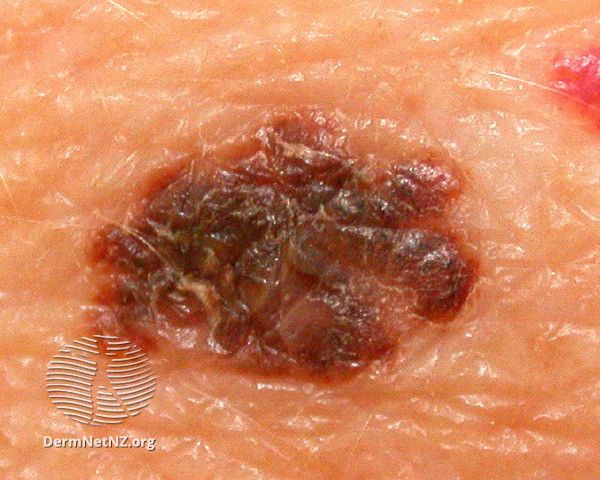- General Dermatology
- Eczema
- Alopecia
- Aesthetics
- Vitiligo
- COVID-19
- Actinic Keratosis
- Precision Medicine and Biologics
- Rare Disease
- Wound Care
- Rosacea
- Psoriasis
- Psoriatic Arthritis
- Atopic Dermatitis
- Melasma
- NP and PA
- Skin Cancer
- Hidradenitis Suppurativa
- Drug Watch
- Pigmentary Disorders
- Acne
- Pediatric Dermatology
- Practice Management
Seemal Desai, MD, Responds to Study Suggesting Melanoma is Overdiagnosed in White Patients
Desai emphasized that most dermatologists would rather biopsy a potential melanoma than miss one that could become deadly.
In January 2024, a study published in BMJ Evidence-Based Medicine stated that melanoma overdiagnosis among white Americans is significant and gradually increasing over time. Adamson et al used data from the Surveillance, Epidemiology, and End Results 9 registries database and DevCan software to calculate the cumulative lifetime risk of being diagnosed with melanoma between 1975 and 2018.1
In their study, Adamson et al found that between 1975 and 2018 the adjusted lifetime risk of being diagnosed with melanoma (invasive and in situ) increased from 3.2% (1 in 31) to 6.4% (1 in 16) among white men, and from 1.6% (1 in 63) to 4.5% (1 in 22) among white women. Adamson et al wrote that among patients diagnosed with melanomas in situ, 89.4% of white men and 85.4% of white women were likely overdiagnosed in 2018.
“Improvement in treatment for advanced melanoma did not happen until 2011, and the effects of treatment on mortality across the population were not seen until 2014 in the US. So, across much of the past 40 years, melanoma rates have been climbing and it had no effect on the death rates, concerning for overdiagnosis,” Adewole Adamson, MD, MPP, lead author of the study, previously told Dermatology Times.
Adamson published another study in 2022 in JAMA Dermatology that found approximately 60% of melanomas in white men and women were overdiagnosed.2
In response to the study claiming melanomas are overdiagnosed, Seemal Desai, MD, FAAD, a board-certified dermatologist at Innovative Dermatology in Plano, Texas, and president of the American Academy of Dermatology (AAD), explained why these findings need further clarification.
Q&A With Seemal Desai, MD, FAAD
Seemal Desai, MD, FAAD
Credit: Innovative Dermatology

Dermatology Times: A recent study published in BMJ Evidence-Based Medicine by Adamson et al stated that the overdiagnosis of melanoma among white patients has increased dramatically in the past 40 years. In your experience treating patients with melanoma, do you find this to be true?
Desai: In my practice, I have not found this to be the case. I have a very diverse patient population, and I also treat lots of patients with skin cancer. We remain vigilant about detection and management. In addition, I firmly believe that patient and public education about skin cancer detection, management, and prevention is of paramount importance.
Dermatology Times: What are the potential negative implications of the findings of this study regarding patient care?
Desai: I don’t necessarily agree that there are negative implications. Let me be perfectly clear: melanoma remains the deadliest form of skin cancer. It has the potential to spread to lymph nodes and internal organs. Not all melanomas will do this, but it is impossible to predict which will and which won’t. Early detection of melanoma is crucial to ensuring that the melanoma is stopped and removed before it has the chance to spread, because once it reaches that point, it becomes far more difficult to treat.
The AAD encourages the public to perform self-examinations of their skin and consult a board-certified dermatologist for anything out of the ordinary, including new spots on the skin, spots that have changed appearance, or any new itching or bleeding. It will then be between the patient and their doctor to come to a decision about how to proceed.
Dermatology Times: What are the potential negative implications of the findings of this study regarding clinician success when treating melanomas?
Desai: Again, I don’t necessarily agree that there are negative implications, and I also think anyone who is focusing on clinician success is missing the point. As doctors and as board-certified dermatologists, we have one goal and one goal only: to provide the highest-quality and most thorough care to our patients that we possibly can. To do anything less would be negligent and would put lives at risk.
I would bet that if you were to ask any board-certified dermatologist, they would rather biopsy and remove 100 potential melanomas that might have turned out to be harmless if we hadn’t checked them than miss even one that turns out to be deadly, and I would also bet that the loved ones of patients who lost their battle with melanoma because it wasn’t detected early enough, would agree.
Dermatology Times: When reviewing this study, what should dermatologists be aware of? What points should they consider in their everyday practice?
Desai: I think the important thing to consider here is the classification used in the study. “Over”-diagnosis. Not “mis”-diagnosis. We have no way of knowing which melanomas will spread before we remove them, which is why the decision to remove a suspicious spot should be made by the patient and their dermatologist. I think most of my colleagues would agree that as doctors and as board-certified dermatologists, we much prefer biopsying and removing a potential melanoma that would not have spread rather than missing one that would have.
References
- Adamson AS, Naik G, Jones MA, Bell KJ. Ecological study estimating melanoma overdiagnosis in the USA using the lifetime risk method. BMJ Evid Based Med. Published online January 19, 2024. doi:10.1136/bmjebm-2023-112460
- Adamson AS, Suarez EA, Welch HG. Estimating overdiagnosis of melanoma using trends among black and white patients in the us. JAMA Dermatol. 2022;158(4):426-431. doi:10.1001/jamadermatol.2022.0139

